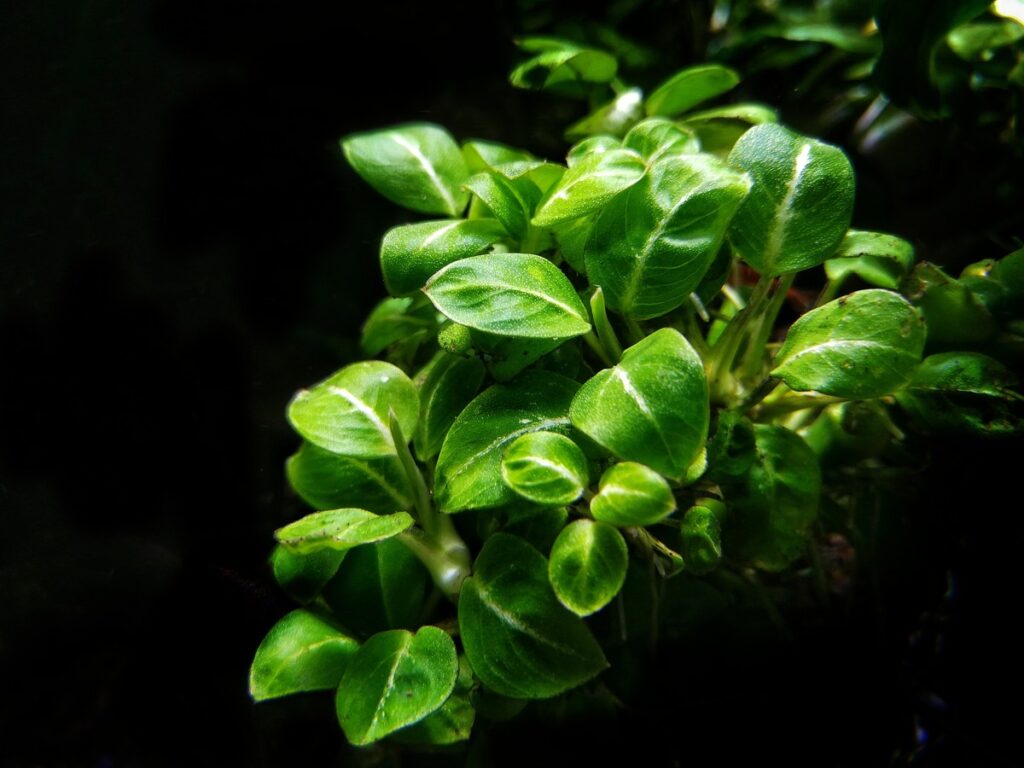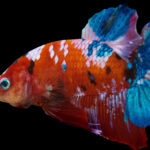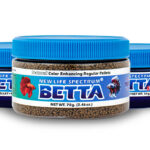So, you’ve just brought home a betta fish or maybe you’re thinking about getting one and now you’re wondering how to take care of this cute fish. Good for you, this article is about Betta Care Guide, it’s not as complicated as you think.
Although they are often called “beginner fish,” Betta fish still need proper care, attention, and a setup that keeps them happy and healthy. With our tips, you’ll avoid common mistakes but also create a space where your betta can thrive. Whether you’re starting with a small tank or building your first aquascape, this guide will give you everything you need to know from tank setup and feeding to behavior and water quality—all in a simple, stress-free way. Let’s get started!
1. Setting up Betta Tank & Environment
Tank Size
Start with at least a 5-gallon tank is perfect cause bettas can survive in smaller spaces, they thrive when they have room to swim, explore, and stretch their fins. A larger tank also makes it easier to keep the water clean and stable.
Heater & Filter
Bettas are tropical fish, so a warm water environment is the best place for them. Keeping the temperature between 76–82°F (24–28°C) using a reliable heater is necessary for your betta. A sponge or adjustable-flow filter is also essential to maintain water quality, but make sure it isn’t too strong cause bettas prefer calm water
Decor & Hiding Places
Add live or silk plants and smooth decorations to create hiding spots and break up the line of sight. Bettas love resting on broad leaves and exploring shaded areas. Avoid sharp or rough decor that could tear their delicate fins.
Lighting & Substrate
Moderate lighting is ideal, especially if you’re keeping live plants. A simple aquarium LED will do the job. For substrate, fine gravel or sand works best—it’s gentle on your betta and easy to clean.
2. Betta Tank Water Quality and Maintenance
Keeping your betta’s water clean and stable is just as important as feeding them the right food. Good water quality helps prevent stress, disease, and fin rot, which are all common problems in poorly maintained tanks. The good news? It’s not hard to manage once you get into a simple routine.
Water Parameters to Monitor
- Temperature: 76 – 82°F (24 – 28°C)
- pH: 6.5 – 7.5 (bettas prefer slightly acidic to neutral water)
- Ammonia & Nitrites: 0 ppm (these should always be at zero)
- Nitrates: Keep below 20 – 40 ppm
Using an aquarium test kit once a week helps you catch problems before they affect your fish.
Water Changes
Do regular water changes to remove waste and toxins. With a 5-gallon tank with a filter, changing 25–30% of the water once a week is a good solution to keep your tank clean. If your tank is smaller or unfiltered, you need to change water more often.
Always treat tap water with a water conditioner before adding it to the tank, cause this removes chlorine and other harmful chemicals to your betta.
Tank Cleaning Tips
Cleaning algae off glass, vacuuming debris from the substrate, and cleaning filter media in old tank water (never tap water) is important while tank cleaning. But please remember that avoid cleaning everything too clean at once, as this can disrupt beneficial bacteria of your tank, and your fish can be stressed about it.
3. Plants, Hideouts, and Decorations
Decorating your betta’s tank isn’t just about decorating it to look nice for your view, it also affects your fish’s health and happiness. Bettas are curious and territorial, and they feel safest in a space with nature and peace, so they can live and rest.
Aquatic Plants For Tank

Live aquarium plants like Java Fern, Anubias, Cryptocoryne, and Marimo Moss Balls are excellent choices. They improve water quality and give your betta places to hide and rest. If you’re not ready for live plants, silk plants are a great alternative—just make sure they’re soft and betta-safe. Avoid plastic plants with sharp edges, which can tear their delicate fins.
See more: Best Aquatic Plant for Planted Betta Tank
Hideouts and Caves
Betta fish love having cozy spots to hide. Look for smooth decorations like betta logs, clay caves, coconut huts, or even clean terracotta pots. These give your fish a safe space to retreat to when they feel stressed or want a break from the light.
Decor Layout Tips
Place taller plants or decorations toward the back, and shorter ones near the front to create depth. Leave open swimming areas in the middle, and include resting spots near the surface, since bettas often pause for a break just below the waterline.
4. Betta Fish Food, Feeding & Nutrition
Feeding your betta with right diet to keep them healthy, colorful, and active. They need a rich protein diet, not just generic fish flakes. Giving them the right food and amount helps improve their immune system, coloration, and prevents bloating or constipation.
What to Feed
The best food is a high-quality betta pellet that lists fish or shrimp meal as the first ingredient. This gives them the protein they need. You can also offer variety with frozen or live foods like brine shrimp, daphnia, bloodworms, or mosquito larvae a few times. And freeze-dried treats are okay, but soak them in tank water first to avoid digestion issues.
Feeding Schedule
Feeding your betta once or twice a day, offering only what they can eat in about 1–2 minutes. Because their stomach is roughly the size of their eye, it’s easy to overfeed. Skipping a day once a week (a fasting day) can actually help prevent bloating and keep their digestion on track.
Feeding Tips
- Remove any uneaten food to keep the water clean
- Use tweezers or your fingers for frozen/live treats to encourage interaction
- Avoid overfeeding—bettas are greedy but prone to constipation
5. Infographic: Betta Fish Care Guide






Leave a Reply